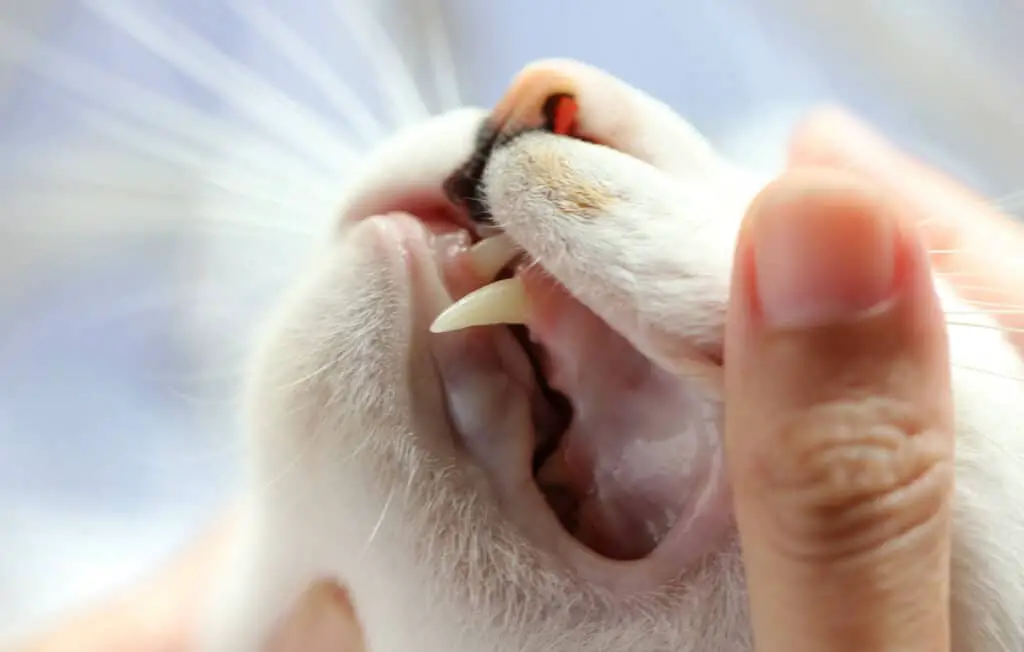Often we wonder whether or not our cats teeth fall out. This is because some cats may have some problems with their teeth, but they are usually pretty easy to cure. You just need to follow some simple steps.
Gingivitis
Sadly, most cats develop some form of dental disease. Dental disease can lead to painful teeth and gums, affecting the cat’s overall health. Some cats will suffer from gingivitis, while others will experience periodontitis.
Gingivitis is a common condition, which is caused by the buildup of plaque. Plaque contains thousands of bacteria. Some of the bacteria can attach to the surface of the teeth, forming a thin film that eventually mineralizes into tartar. The tartar is hard and irritates the gums.
If left untreated, gingivitis can lead to periodontitis. Periodontitis can cause your cat to lose one or more teeth. It also can affect the ligaments, bone, and tissues that support the teeth.
Gingivitis is characterized by swollen, red gums. Some cats may also experience halitosis, bleeding from the mouth, and difficulty eating. It is important to treat gingivitis in cats. Depending on the severity of the condition, treatment may include scaling the plaque off the teeth, antibiotics, or even a general anesthetic.
If your cat shows any signs of gingivitis, make an appointment with your veterinarian. Gingivitis is a chronic condition, so it is important to monitor it. If left untreated, gingivitis may advance to periodontitis, which can lead to loose or missing teeth.
Gingivitis is the most common oral disease in cats. It can be caused by a number of infectious and systemic diseases, including feline calicivirus, feline leukemia virus, and feline immunodeficiency virus.
Retaining baby teeth
Keeping a cat’s baby teeth after they fall out is common, but it can lead to dental problems. Tooth crowding can lead to bad breath, dental disease, and premature tooth loss.
Typically, the upper canine tooth is the most common retained tooth. In some cases, a lower canine tooth will also be retained. If the x-ray reveals that the tooth has been retained for a long time, the veterinarian may have to remove the tooth.
The main reason for retaining a baby tooth is the lack of permanent teeth. Some breeds of dogs and cats are known to retain their baby teeth.
The tooth is typically luxated (slightly elevated) to prevent damage to the adult tooth. If the retained tooth is in the incisors or first molars, more treatment may be needed.
Retained deciduous teeth are common in small breed dogs and cats. In most cases, the teeth will remain in the mouth, though they may not resorb. Sometimes, the tooth can be removed by a veterinarian using a general anesthetic.
Retained teeth can cause abnormal tooth positioning, which can cause problems with chewing and biting. They can also cause food to become trapped between the teeth, which can lead to tartar buildup, periodontitis, and dental disease.
The most common retained deciduous teeth are the canine teeth, although the incisors may be retained as well. Retention is caused by a combination of factors, including genetics and hormonal changes. If you suspect that your cat has retained a tooth, contact your veterinarian for an evaluation.
Feline odontoclastic resorption lesions
Feline odontoclastic resorption lesions are a dental disease that occurs in cats. These lesions can be painful and can cause a cat to have trouble eating. They can also lead to bloody saliva and drooling. These lesions are sometimes mistaken for cavities.
The inner canal of a cat’s tooth is filled with blood vessels and nerves. The resorption of the tooth can leave a nerve exposed and cause chronic pain. When it is too painful for a cat to eat, a vet can perform an extraction.
A resorptive lesion occurs when the cat’s own cells start breaking down the tooth. This is different from a cavity in humans, which is caused by bacterial acids eroding the enamel. Unlike cavities, resorptive lesions are not contagious.
The condition is caused by odontoclasts, which destroy the tooth from below the enamel. The first teeth affected are the bottom molars. The root surface is also damaged. The condition is most common in cats.
A cat’s teeth are made up of dentin, enamel, and cementum. The dentin is a hard bone-like substance that forms the bulk of the tooth’s structure. In addition to dentin, the tooth contains tissue that is made up of nerves and lymphatic vessels.
Dental radiographs can help determine the extent of damage to a cat’s teeth. The extent of damage depends on the location and extent of the lesion.














